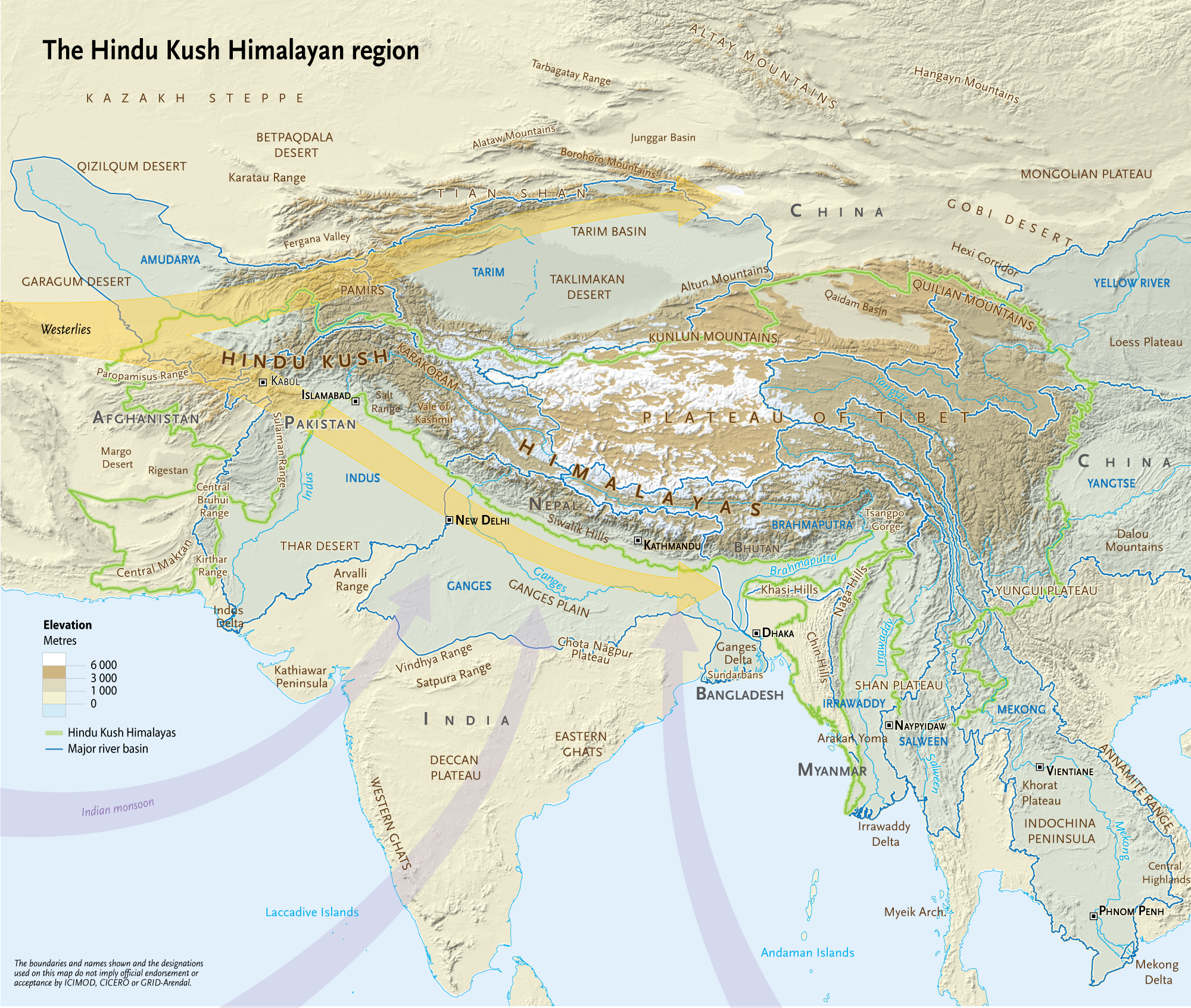Context:
According to a new report by the International Centre for Integrated Mountain Development (ICIMOD), the Hindu Kush Himalayan (HKH) region is facing a significant threat due to declining snow persistence. It is affecting the water security of nearly 2 billion people across 12 major river systems, including the Ganga, Indus, and Brahmaputra river basins. The region has recorded its lowest snow persistence in over two decades, raising red flags for the water security of nearly two billion people across 12 major river systems.
About the report:
The ICIMOD report, based on a 23-year satellite time series (2003–2025), reveals that average snow persistence across the HKH region during the November–March season has dropped to 23.6%—its lowest in 23 years.
● Ganga Basin: 24.1% below normal snow persistence.
● Indus Basin: 24.5% below normal.
● Brahmaputra Basin: Also facing significant snow deficits, though slightly less severe than Ganga and Indus.
What are the main causes of this crisis?
The report attributes the persistent decline in snow to climate change, particularly:
● Warming temperatures across the HKH
● Carbon emissions that have already locked in long-term impacts
● Increased variability in precipitation patterns
Why This Matters:
The Hindu Kush Himalayas are often referred to as the "Water Towers of Asia", feeding vital rivers that support agriculture, hydropower, biodiversity, and livelihoods across South Asia. Roughly 25% of river runoff in these basins comes from seasonal snowmelt, a share that increases from east (Ganga) to west (Indus).
Without adequate snow accumulation and gradual melting, river flows in early summer will diminish, directly impacting:
● Irrigated agriculture across the Indo-Gangetic plains.
● Hydropower generation in Himalayan states and downstream countries.
● Drinking water availability in urban and rural areas.
● Wetland ecosystems and biodiversity hotspots that rely on consistent water flow.
The Path Forward:
Given the transboundary nature of South Asia’s major rivers, addressing this crisis will require unprecedented regional collaboration. The report strongly advocates for the development of multilateral treaties and shared water governance mechanisms among countries like India, Pakistan, China, Nepal, Bhutan, and Bangladesh.
Such agreements would not only focus on equitable water sharing but also include:
● Joint climate adaptation strategies
● Data and technology sharing
● Disaster risk mitigation, especially with increasing glacier lake outburst floods (GLOFs) and droughts








